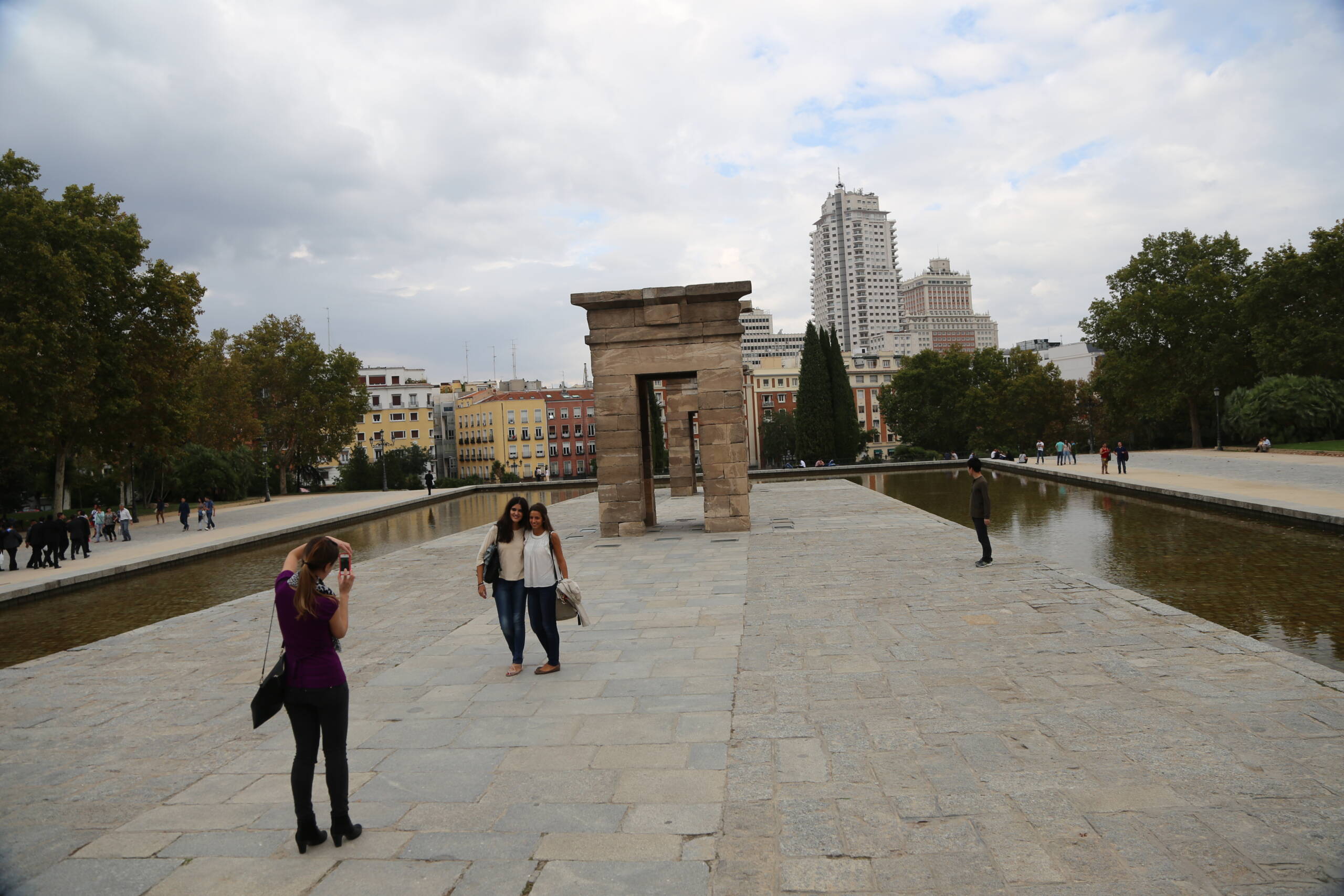Travel photography has a way of blending people and places into one memory, and sometimes the simplest scene—a few friends at a monument—carries more meaning than a thousand carefully staged shots. At Madrid’s Temple of Debod, an ancient Egyptian structure gifted to Spain and reconstructed stone by stone in the heart of the city, the story of travel becomes as much about companionship as about heritage. In this moment, two friends stand side by side, leaning into each other, smiling with the easy warmth that comes from sharing a journey. Another friend stands a few steps back with camera in hand, ready to freeze that memory against the backdrop of history. Around them, the city hums—apartment windows stacked in color, trees swaying, skyscrapers towering in the distance—yet the focus rests on this intimate triangle of people, place, and lens.

From the photographer’s perspective, it’s a balancing act. Standing too close risks turning the picture into a cropped snapshot where the temple becomes an afterthought. By taking a few steps back and lowering the angle, the scene could transform. The temple would rise fully above their heads, its weathered stone blocks drawing the eye upward while the reflecting pool stretches below, catching fragments of sky and monument in shimmering symmetry. The friends would no longer just stand in front of history—they would be embraced by it, framed by lines that lead from water to stone to skyline. It is in these subtle compositional choices that a photograph shifts from personal memento to visual story.
A small adjustment to the side could bring even more depth. Aligning the two friends so they stand beneath the arch would turn the temple itself into a frame, placing them in dialogue with the monument rather than simply in front of it. In doing so, the photographer wouldn’t just document a visit; they would compose a scene where ancient architecture becomes a partner in the portrait. Waiting a moment longer for the passerby to leave the platform would strip away distraction, letting the focus linger on the central trio—the people, the temple, and the reflection. Yet the presence of other visitors, if included intentionally, has its own charm, reminding us that travel is rarely a solitary experience. Each person becomes part of the site’s living story, just as much as the centuries-old stones themselves.
The light of the day also matters. Under a cloudy sky, the monument looks subdued, its texture softened, the colors of the city dulled. That kind of diffused light is perfect for portraits, avoiding harsh shadows on faces, but it leaves the temple less dramatic. Had the shot been taken at golden hour, the stone would glow in warmth, the pool would catch streaks of color, and the skyline would fade gently into dusk. The photographer, standing in that same position, could then decide: do they let the golden tones wrap their friends in soft light, making them the star of the picture, or do they widen the frame to capture the temple basking in the glow, allowing the friends to become small yet meaningful figures inside a larger landscape?
This is what makes travel photography both challenging and rewarding. Each click of the shutter is a choice: do we honor the people in the frame above all else, or do we let them blend into the rhythm of architecture and place? Here at the Temple of Debod, those choices are magnified by contrasts—ancient Egypt against modern Madrid, still water against a restless city, friendship against the weight of history. The photographer’s viewpoint is the hinge that decides how all these layers connect. And in the end, no matter the angle, the most important thing is not just what the lens captures, but the memory it preserves—the laughter shared, the closeness felt, and the sense of standing together before something greater than ourselves.
Leave a Reply